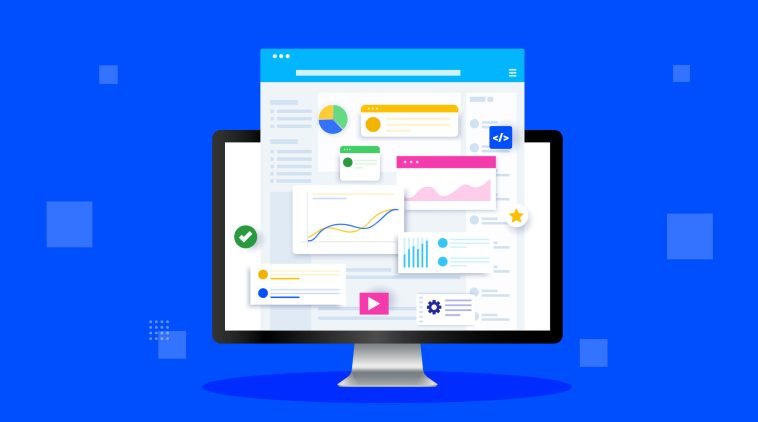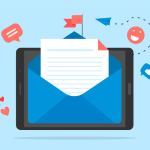Introduction.
Email marketing. It’s been around for what feels like forever, but it’s far from outdated. In fact, when done right, it can become one of the most effective components of an inbound marketing strategy.
If you’re looking to increase brand awareness, nurture leads, or even convert hesitant prospects into loyal customers, email marketing has the potential to do it all. But how does it actually integrate into and power your overall inbound strategy?
Let’s unpack that.
Why Email Marketing Still Matters
First, it’s important to address a question that’s probably crossed your mind at some point: “Is email marketing still relevant in a world where social media and video content dominate?” The short answer is yes.
In fact, research backs up the claim: according to HubSpot, email generates an average ROI of $36 for every $1 spent.
It’s not just about the return on investment; email marketing provides a direct line to your audience that doesn’t rely on algorithms or third-party platforms.
Think about it. Everyone with an internet connection has an email address, and most of us check our inboxes multiple times a day.
Unlike the fleeting nature of a social media post, an email stays in an inbox until it’s read, archived, or deleted. This gives you more opportunities to connect and engage with your audience.
How Can Email Marketing Fuel Your Overall Inbound Strategy?
Email marketing doesn’t work in isolation. It’s one of the key elements that can supercharge your inbound strategy. Here’s how it integrates seamlessly:
1. Content Distribution.
Your inbound marketing strategy probably includes a blog, social media, and other content-driven resources.
Email marketing can be a direct way to share these assets with your subscribers, driving traffic to your site and boosting engagement.
If you publish a new blog post or release an educational webinar, your email list can be the first to know.
2. Lead Nurturing.
With inbound marketing, the goal is to attract leads and gradually guide them down the sales funnel. This is where email shines.
Through a series of well-crafted emails, you can nurture leads over time, providing them with valuable content that builds trust and keeps them engaged with your brand.
3. Personalization.
One of the pillars of a successful inbound strategy is offering personalized, relevant content to your audience.
Email marketing allows you to segment your audience and tailor messages specifically to their needs and preferences.
This could mean sending different content to new subscribers compared to seasoned followers or personalizing based on past behaviors.
4. Automation.
Automation is another game-changer. With automated email workflows, you can send timely, relevant content to subscribers without having to manage each email manually.
This not only saves you time but ensures that your audience receives the right information at the right stage of their journey.
5. Feedback and Insights.
An inbound strategy thrives on data and insights. Email marketing provides exactly that. With metrics like open rates, click-through rates, and conversion rates, you gain a clearer picture of what resonates with your audience. This feedback can guide your broader content strategy, informing which topics and formats are most effective.
The Pros and Cons of Email Marketing for Inbound
Just like any other marketing tactic, email marketing has its ups and downs. Here’s a quick rundown of the pros and cons to consider:
Pros:
- High ROI: As mentioned earlier, email marketing is cost-effective and can yield impressive returns.
- Measurable: You can track every aspect of your campaigns, from how many people open your emails to how many click on links.
- Automation Capabilities: Set up workflows to engage leads even when you’re not working.
- Direct Communication: Emails land directly in your audience’s inboxes, cutting through the noise of social media algorithms.
- Personalization and Segmentation: Tailor content to the individual needs of different segments.
Cons:
- Inbox Overload: With so many brands leveraging email, there’s a risk of your messages getting lost or ignored.
- Spam Filters: Even well-intended emails can get caught in spam filters, reducing your reach.
- Design Limitations: Unlike websites or social media, the design options in email clients can be somewhat restrictive.
- Time-Consuming: Creating well-thought-out campaigns can take time, even with automation.
FAQs
1. How do I build an effective email list?
Building a high-quality email list takes time and effort. Avoid the temptation to buy email lists; instead, focus on creating engaging content that encourages people to sign up willingly. Pop-up forms on your website, offering exclusive content or discounts, and using landing pages for specific campaigns are great ways to grow your list organically.
2. What types of content should I send to my subscribers?
Content should be valuable, relevant, and tailored to your audience’s needs. Consider sending newsletters, educational content like guides or how-tos, product updates, customer success stories, or even personalized recommendations based on their past interactions.
3. How often should I send emails?
There’s no one-size-fits-all answer. The frequency depends on your industry, audience preferences, and the type of content you’re sending. However, consistency is key. Whether it’s weekly, bi-weekly, or monthly, try to stick to a regular schedule.
4. What are the best practices for writing engaging subject lines?
Subject lines are crucial because they’re the first thing your audience sees. Aim to be concise, intriguing, and relevant. Personalization can also work wonders — adding the recipient’s name or referencing their interests can boost open rates. Avoid using all caps or excessive exclamation points, as these can trigger spam filters.
5. How do I avoid the spam folder?
To prevent your emails from landing in spam, make sure your content is high-quality and not overly promotional. Using double opt-in (where subscribers confirm their email addresses) and avoiding spammy keywords like “free” or “guarantee” can also help. Plus, always include an easy way for people to unsubscribe.
In Conclusion
Email marketing isn’t a magic solution, but it’s a powerful tool when integrated thoughtfully into an inbound strategy.
Its ability to nurture relationships, offer personalized content, and deliver measurable results makes it hard to ignore. But it requires a strategic approach and a genuine understanding of your audience’s needs.
So, as you reflect on your own marketing strategy, ask yourself: How can email marketing elevate your overall inbound approach, and are you ready to leverage its full potential?





GIPHY App Key not set. Please check settings